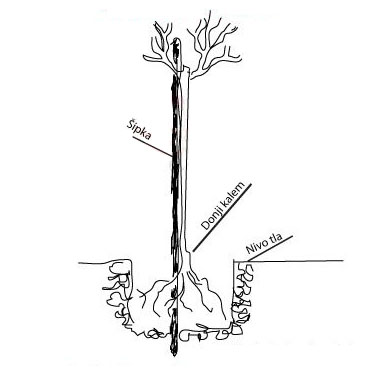Select your language
-
Srbija
Cober 5 bb
početak oktobra
Sorta je nastala na oglednom dobru za vinogradarstvo u Sremskim Karlovcima kao rezultat složenih višekratnih ukrštanja (Kunbarat x Traminer x Bianca) x Riesling 239-20 Gm. Genotip je nastao interspecies hibridizacijom. Među srpskim autohtonim sortama Morava zauzima posebno mjesto zahvaljujući svojoj sposobnosti da proizvede vina koja odražavaju podneblje i tradiciju, a istovremeno pružaju jedinstveno i moderno iskustvo degustacije. Njena popularnost među vinoljupcima raste, kako u Srbiji, tako i na međunarodnom tržištu, što je čini jednom od sorti koja obećava u budućnosti srpskog vinogradarstva.
Meso bobice je sočnog i karakterističnog uskusa. Daje elegantno vino sa karakterističnim mirisom koji mnogo podseća na miris Sauvignon-a. Ova sorta proizvodi vina koja su poznata po svojoj svježini, harmoniji i izraženim aromatičnim profilima. Vina od Morave karakterišu svijetle, živopisne boje i kompleksne arome koje često uključuju cvjetne i voćne note, poput jabuke, kruške, breskve, i citrusa, sa suptilnim mineralnim tonovima.
Grozdovi su srednje krupni, kupasti i rastresiti. Bobice imaju jaku pokožicu i sočnu pulpu. Nakuplja oko 20 % šećera uz visok sadržaj kiselina, od 9 do 10 g/l.
Samooplodno.
Morava se odlikuje visokom otpornošću na sivu plijesan grožđa i plamenjaču. Na pepelnicu nije mnogo osjetljiva ali se ne može gajiti potpuno bez zaštite, jer je napad pepelnice bio vidan na lišću, dok je napad na grožđu bio beznačajan. Otpornost prema niskim zimskim temperaturama je relativno visoka.
You can purchase seedlings of Grožđe Morava at our garden center in the nursery located at Gornjem Crnjelovu, Glavna 65a.
Upon collection of the goods (seedlings), the Agromedžik nursery no longer has the possibility of supervision or care, and therefore cannot provide any further guarantee. Since seedlings are living beings, it is not possible to give a guarantee even a day after they leave the nursery. We cannot influence their maintenance and care, and consequently their further growth and development.
Our plants regularly undergo phytosanitary and vegetative inspections, therefore we do not have diseased or infected plants.
The depth of the pit is 40-50 cm, and the width is 30-40 cm.
First, a 5-6 cm layer of loose, fertile soil is placed at the bottom of the pit.
Cut the root of the vine seedling to 10 to 12 cm from the main stem (substrate).
Insert the vine seedling into the hole at an angle of 45°. The connection point of the coil should be 2-3 cm above the ground surface.
Once the seedling is placed in the hole, a layer of crumbly, fertile, and moderately moist soil is spread over the roots. The applied soil layer is then firmly pressed down.
The graft is supported by hand below the grafting point so that it does not move during pressing and compacting.

After the pressing and compacting of the soil is completed, the seedling is watered with 5 liters of water.
Then the remaining upper part of the hole is filled with a mixture of soil and organic fertilizer. The soil is first mixed with well-rotted manure, and then this mixture is poured into the hole and firmly compacted by pressing.
In autumn planting, apply finely crumbled soil over the planted seedling and form a mound so that only 1–2 cm of the branches remain exposed. The mound protects the seedling from freezing during the winter.
In spring planting, it is not necessary to form a mound.